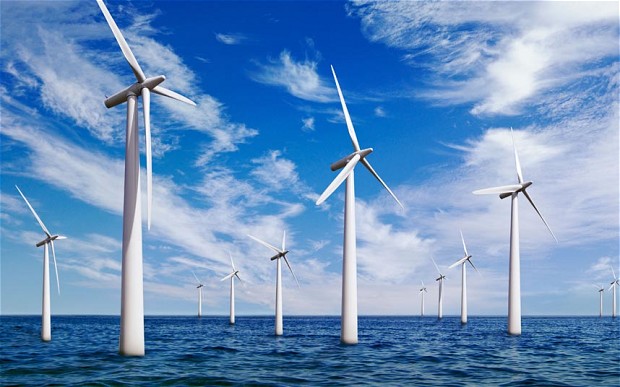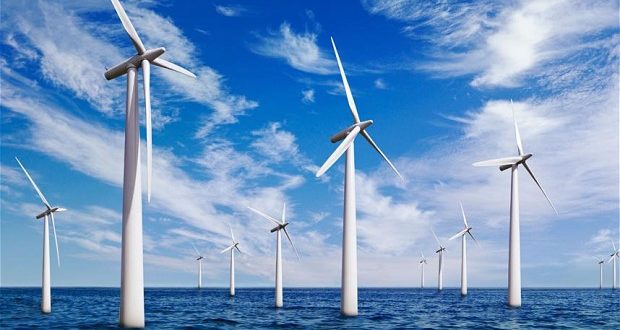
NRDC Report: Replacing Coal with Renewables and Energy Efficiency Can Lead U.S. to Cleaner Energy Future
WASHINGTON (March 2, 2017) – It’s cheaper and cleaner to replace retiring coal-fired power plants with wind and solar power and energy efficiency upgrades rather than to saddle the nation with more costly and climate-polluting natural gas plants, according to a report released today by the Natural Resources Defense Council.
Adopting cleaner energy and efficiency in our buildings, homes and consumer appliances also will provide more stability to the nation’s electric grid. And it will shield Americans from electricity bill spikes from potential natural gas price increases, NRDC’s report, “Clean Energy and Efficiency Can Replace Coal for Reliable Modern Electricity Grid,” shows.
The report comes as President Trump is expected to try to rein in the Clean Power Plan, which is designed to cut dangerous carbon pollution emitted by power plants. That action could come as early as next week.
Trump and the coal industry and their allies have blamed the Obama Administration’s efforts to combat climate change for the coal industry’s downturn.
But in fact, a variety of forces have put the industry on the ropes. They include a combination of competitive natural gas prices, plunging renewable technology costs, lower demand growth, and environmental standards. Together they have prompted power companies to retire dozens of aging high-polluting coal plants, and that trend is expected to continue, the report notes.
“The shift away from coal, and the ongoing retirement of aging coal plants, presents our country with an historic opportunity,” said Starla Yeh, the report’s co-author and a senior policy analyst in NRDC’s Climate and Clean Air Program. “The U.S. is perfectly positioned to lead a global transition to clean energy, modernize its electricity grid, enlist tens of thousands of Americans in new efficiency and clean energy jobs—and help protect the planet from climate devastation.”
Even Robert Murray, CEO of the largest U.S. private coal miner, said earlier this year that coal employment “can’t be brought back to where it was before the election of Barack Obama.” And Brian Corbett, spokesman for DTE Energy which provides electricity to several million customers in Michigan, has said: “Many of our coal plants are aging and need to be replaced with cleaner, modern generating technologies, which is what our customers are asking of us and we plan to continue working to achieve these goals.”
Already, the clean energy sector is one of the fastest growing job-creators in the U.S. economy—3 million jobs and counting, according to recent U.S. Department of Energy data. These jobs include more than 2 million Americans working in energy efficiency, nearly a half million in clean power generation, and 400,000 in advanced electric grid and clean transportation.
Much more can be done to save even more energy and money, simply by promoting more efficient appliances, buildings, lighting and the like, which will continue delivering reliable energy at a lower cost.
In addition, in the past seven years alone, the costs of generating electricity from wind and solar –including capital outlay, operation and maintenance costs, and financing— have dropped 66 percent and 85 percent, respectively, the report says.
These plummeting technology costs, along with growing demand for renewables to meet state renewable energy standards, have driven a major gain in wind and solar generation that is expected to continue, according to the report.
As a result, many states are ramping up clean energy generation. Iowa, for example, is on track to become the first state to generate 40 percent of its power from wind. And five states –California, New York, Hawaii, Oregon and Vermont—plus the District of Columbia– home to one-fifth of the country’s population, have set a goal of getting at least 50 percent of their electricity from renewable sources.
With smart planning, renewable power can be more reliable, more able to meet peak energy demands and less subject to cost fluctuations than building new natural gas plants.
Taken together, the report shows, replacing retiring coal plants with increased efficiency, renewable energy and improved grid management—instead of building costly new natural gas pipelines and power plants—can help the U.S. avoid locking into a fossil fuel-dependent future. This clean energy expansion also will deliver social, environmental and economic benefits, while minimizing the downside impacts from natural gas on public health and the environment.
The environmental risks to get natural gas from hydraulic fracturing, or fracking, are significant. But so, too, are the carbon dioxide emissions from natural gas plants.
The extraction and transporting of natural gas also results in dangerously large emissions of methane, a very potent greenhouse gas that contributes to climate change. Expanding natural gas power plants would set back efforts to reduce all greenhouse gas emissions in order to avoid the worst impacts of climate change scientists predict will occur with inaction, the report notes.
NRDC urges states to strengthen energy efficiency and renewable energy investments and engage in smart planning to help boost investments in making the nation’s electricity grid more flexible and accommodating to electricity generated from clean energy. This will move America forward to a brighter more affordable and reliable clean energy future.
NRDC’s report is here: https://www.nrdc.org/
 Alternative Energy HQ solar power for homes, wind energy, and bio fuel issues
Alternative Energy HQ solar power for homes, wind energy, and bio fuel issues






